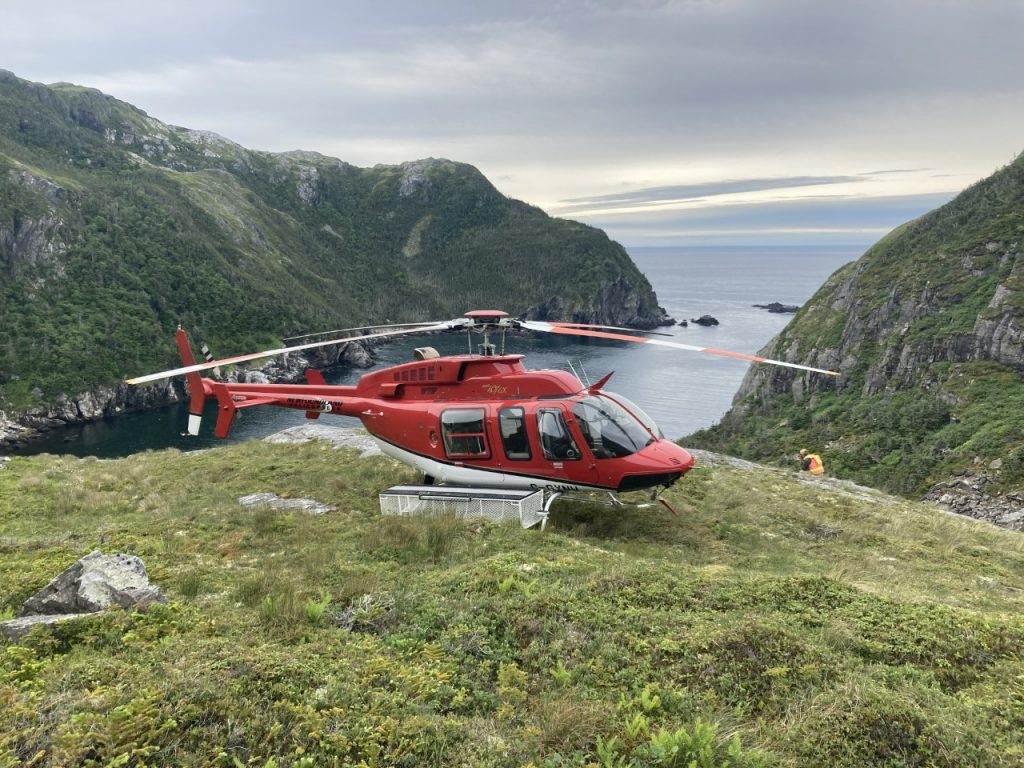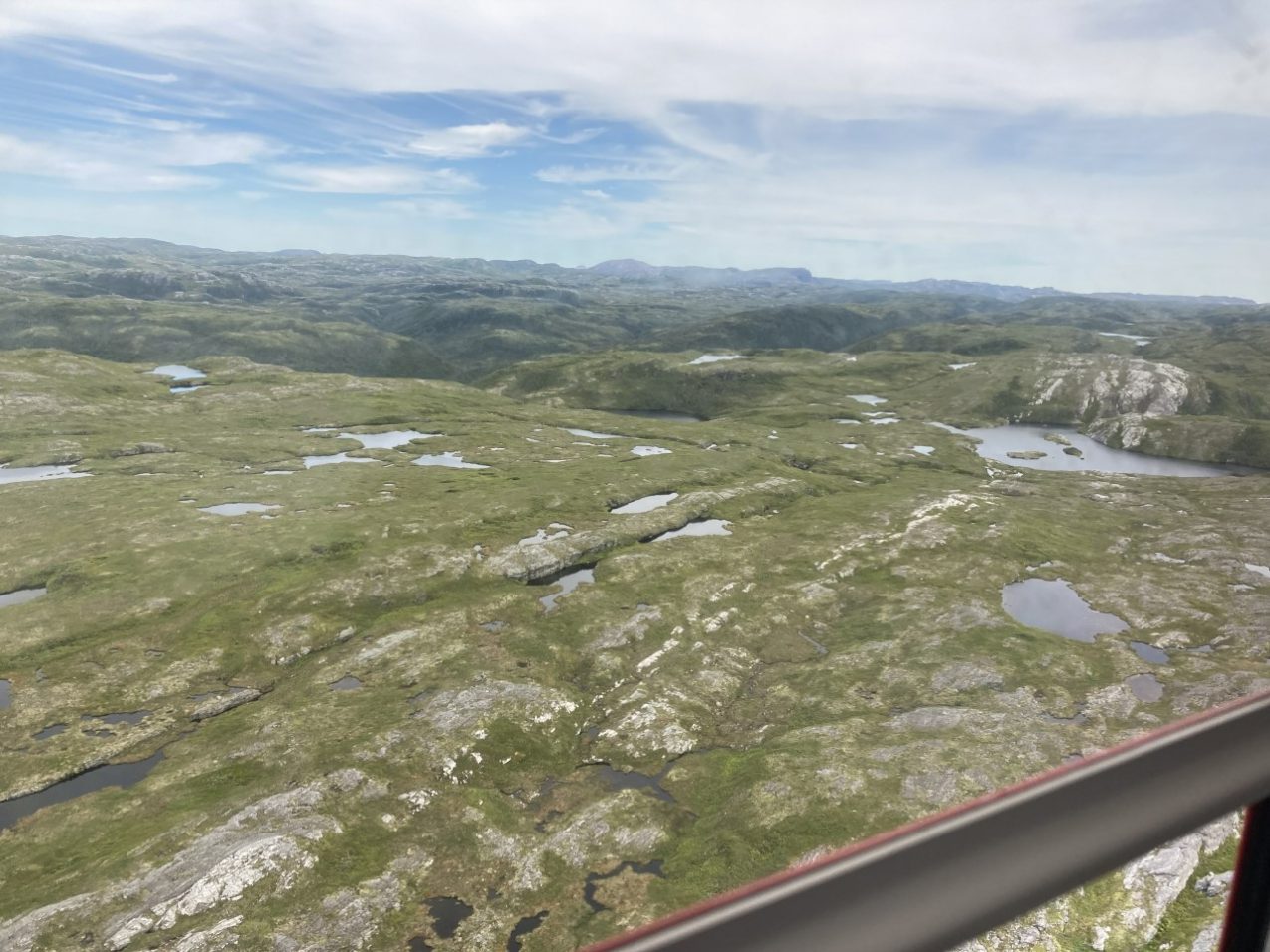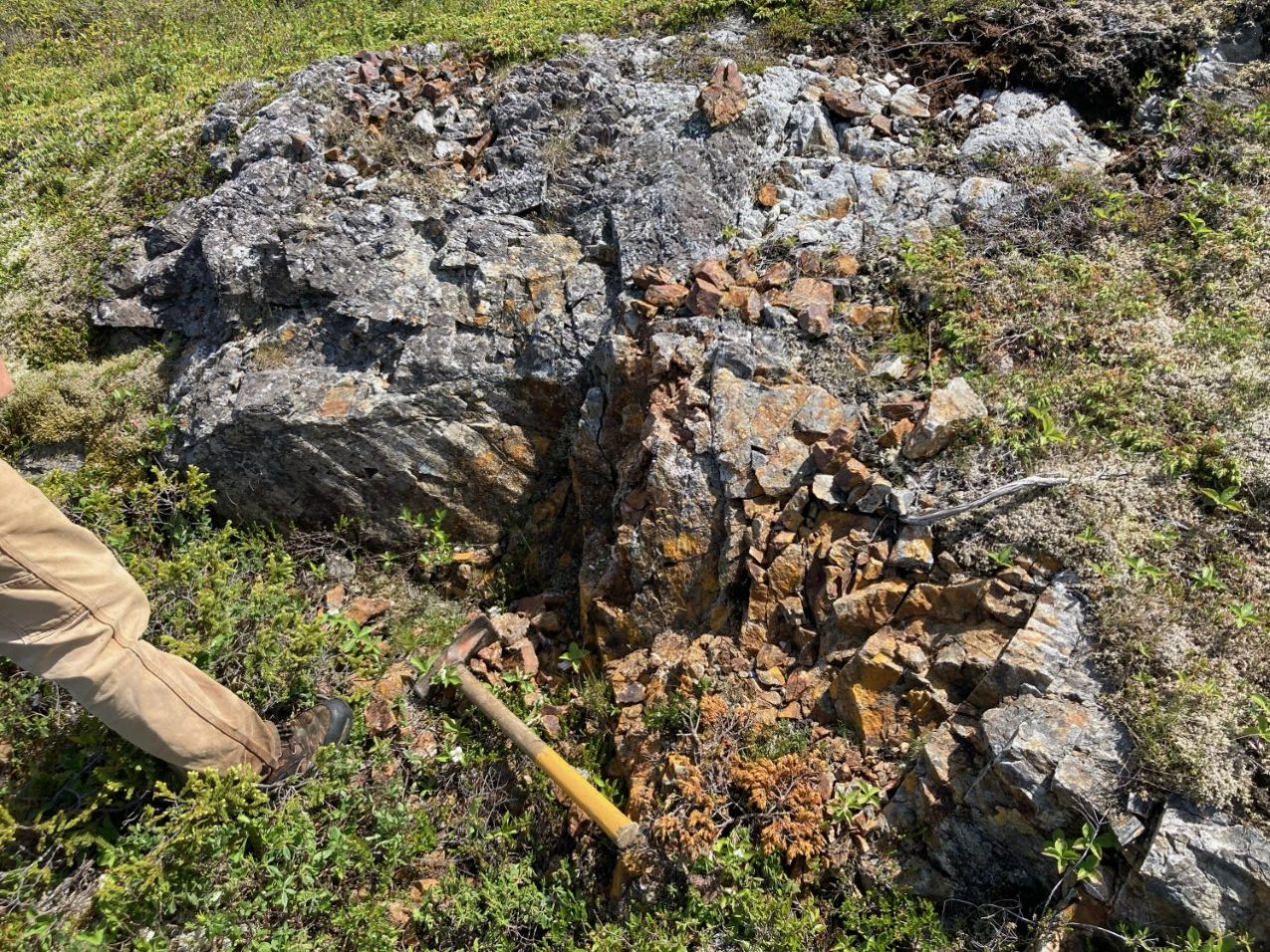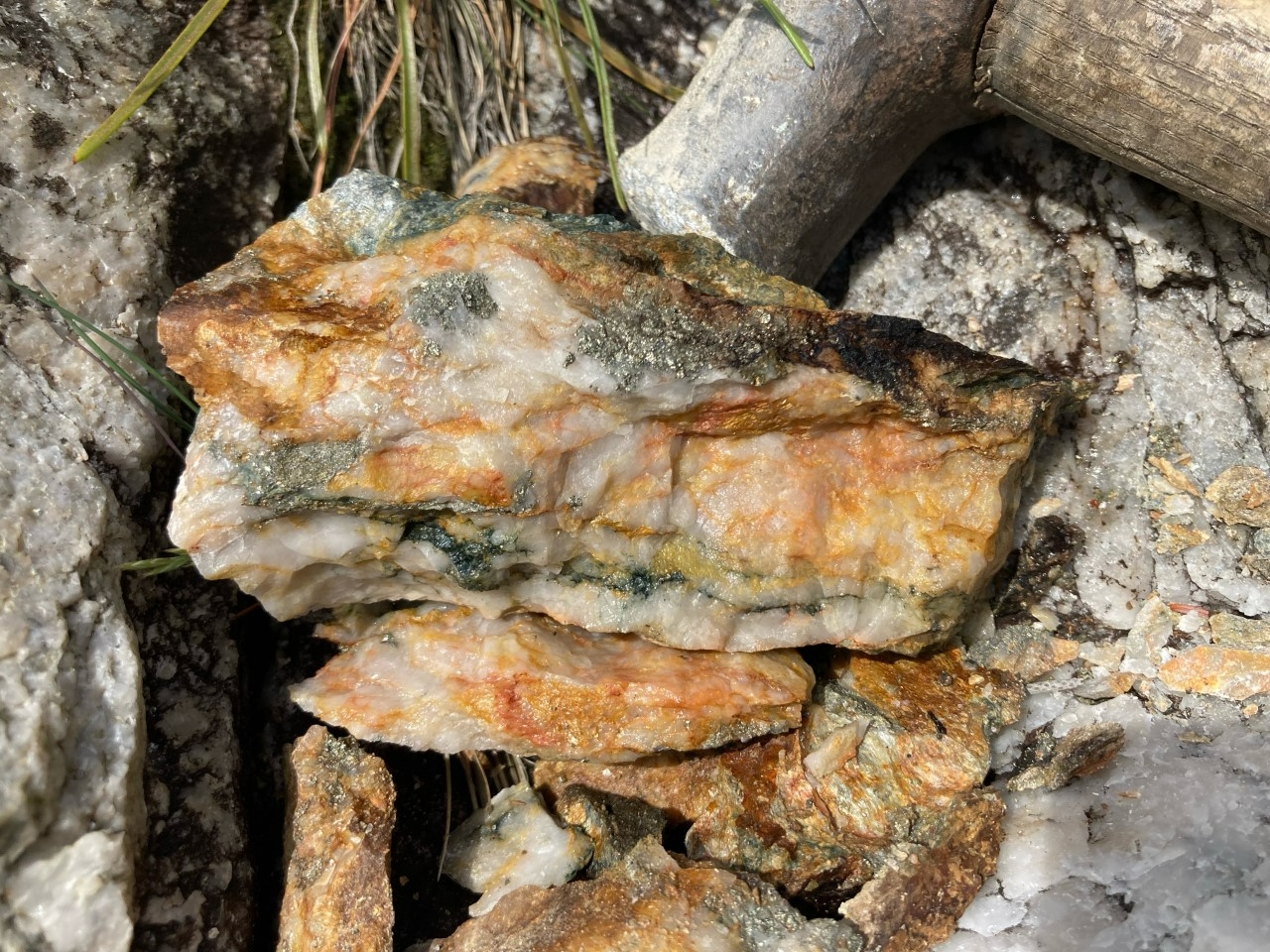Newfoundland and Labrador’s notable mining history carries on

By David Duval
For an island that’s commonly referred to as ‘The Rock’ it shouldn’t be a surprise to anyone that mining has played an important if sporadic role in the economic, social, and cultural history of the eastern Canadian province of Newfoundland and Labrador.
Mining is one of Newfoundland and Labrador’s largest and oldest industries, and a major contributor to the economy of the province, especially in rural areas. More than 15 mineral commodities have been produced or mined in the province.
Five metal mines currently produce iron ore, nickel, copper, cobalt and gold. Other operations mine pyrophyllite, limestone and dolomite, amongst other commodities. The province’s mining and mineral exploration companies directly provide high-paying jobs to more than 7,000 men and women.
Newfoundland’s mineral potential was acknowledged publicly way back in the 1830s and 1840s by Joseph Jukes who noted many of the island’s mineralogical and geological features in reports of his explorations. The first systematic attempt to map out the island’s mineral potential appeared in the Geography and Resources of Newfoundland that was published in 1877. Both Canada and the United States were conducting similar surveys at the time as part of a worldwide trend. The huge iron ore deposits of Labrador and neighboring areas of Québec were discovered by the Canadian survey in 1892.
Geological explorations started in 1866, when priests penetrated the Knob Lake-Burnt Oreek area of what is now known as the Labrador-Quebec Iron Ore Trough. The priests recognized that oxidation on the surface was an indication of the presence of iron ore.
During the 1880s, the major iron and steel interests by-passed this bleak and desolate area of western Labrador for mining investments because of the inaccessibility and resulting high costs of transporting the ore to steel mills as compared with iron ore mining and transportation costs in the Mesabi Range area of the Lake Superior district.
Today, iron ore production is a major industry in western Labrador and eastern Quebec.
Not surprisingly, all these exploration initiatives had one specific purpose: to open up the resources of the interior of the province in order to provide employment for the island’s growing permanent population, and to emulate the continental model of resource development.
The increased attention to mineral resources was part of a broader industrial trend that spurred construction of railway and similar land-based developments. Indeed, many of the key political figures of the period were involved in both the mining and railway enterprises.
In fact, the 31st President of the United States, Herbert Hoover, spent much of his early life working in the mining industry. Hoover graduated from Stanford University in California with a degree in geology in 1895 and later worked with the U.S. Geological Survey.
Perhaps the most notable of the Newfoundland mining entrepreneurs was Charles Fox Bennett, who led the anti-confederate forces in the Newfoundland election of 1869, and was for decades a key player in the island’s exploration and mining industries. Newfoundland actually didn’t become a Canadian province until 1949.
The first major mining development in Newfoundland began in Tilt Cove, on the northeast coast, in 1864. Large copper deposits and fairly high traces of gold had been discovered there in 1857, and from 1864 to 1917, Tilt Cove was at times one of the world’s largest producers of copper. In 1917, international market and military conditions, as well as problems of ore grade and accessibility, forced a shutdown of the mines. Operations were re-started there in 1957, after the Maritime Mining Company discovered further deposits, and continued until 1967.
The Tilt Cove discovery signaled the beginning of an intense period of mining activity on the northeast coast.
In Terra Nova, thousands of tons of copper ore were mined and shipped out during three separate periods between 1860 and 1915. At Bett’s Cove, just southwest of Tilt Cove, large quantities of copper and pyrite were extracted until the mine roof collapsed (miraculously without loss of life) in 1873, while in Little Bay tens of thousands of tons of copper ore and nearly 200,000 grams of gold were mined and shipped up until 1968.
The other major group of mines in the area was the Consolidated Rambler Group, which included Rambler, Ming, East, and Big Rambler Pond mines. Most of these ore bodies were discovered shortly after the turn of the century, but the mines were opened much later, in the 1960s and 70s, and were short-lived operations.
While the northeast coast copper, gold and pyrite mines were productive when in operation, most of them, with the exception of Tilt Cove, were relatively small enterprises. The iron ore mines of Bell Island were a different matter, however. Opened by the Nova Scotia Steel and Coal Company in 1895, by 1900 the Bell Island mines had become one of the leading sources of iron ore in the world that was later supplemented by the Dominion Steel Corporation. By 1910, hundreds of miners were extracting the iron ore that fed the huge steel mills of Sydney, Nova Scotia as well as other more distant plants.
Over the decades until shutdown in 1966, the Bell Island mines were plagued by a number of problems, such as legal and financial wrangling among distant owners, international wars, fluctuating ore prices, and competition from other producers. When the last shaft closed in 1966, however, Bell Island was the longest continually operating mine in Canada. Though large quantities of ore are reported to still to exist there, the Bell Island mines have not re-opened.
In 1905, another major island mineral discovery was confirmed when the Anglo-Newfoundland Development Company (AND) tested ore samples from around the Buchans River area and found they contained commercial quantities of zinc, lead, copper, gold, and silver.
Not until 1925, however, was a process established to separate the minerals, after the AND joined forces with the American Smelting and Refining Company (ASARCO). The AND, which also controlled most of the vast timber resources in the area, along with the major transportation routes, began in 1927 to construct a genuine company town in the Newfoundland wilderness.
The Buchans mines operated for nearly half a century, with production ceasing in September 1984 after 17.5 million tons had been mined and processed over the mine’s 55-year history.
There has been intermittent renewed private interest in the recycling of mine tailings to remove barite for use in engineering services related to offshore drilling. A reorganized version of the barite recycling operation first attempted by ASARCO in the early 1980s, prepared and tested by another group in the late 1990s, did operate under Pennecon in 2009 and intermittently under another partnership in the 2010s. The tailings ponds near the Lucky Strike mine site contain millions of tons of material that is 30% barite.
The other two major twentieth century mines on the island of Newfoundland were the St. Lawrence fluorspar mines and the Baie Verte asbestos mines. In St. Lawrence, on the Burin Peninsula, the American-based St. Lawrence Corporation of Newfoundland began in 1933 to extract and export the area’s vast bodies of fluorspar for use in the United States chemical, manufacturing and military industries. The Corporation was joined in 1939 by the Newfoundland Fluorspar Company, a subsidiary of the Aluminum Company of Canada (ALCAN). By 1961, ALCAN had bought out the Corporation’s holdings to become the sole operator.
The St. Lawrence mines shut down in 1978, with the company citing labour unrest and the ready availability of cheaper fluorspar in Central and South America as the primary reasons.
In Baie Verte, Advocate Mines, a division of the giant Johns-Manville company, began production of an open-pit mine in 1963, to mine the area’s asbestos deposits. By the 1970s, it had become apparent that asbestos was creating health problems among the workforce. Asbestos production ceased in the area when market and accessibility problems, along with health and legal difficulties, made the mine no longer viable to operate by 1990.
In Labrador, though substantial iron ore deposits were discovered in 1892, isolation and other factors prohibited mining until the 1940s, when electrical and railway facilities open the area to industrialization. The Iron Ore Company of Canada (IOC), a conglomerate of eight companies, began mining iron ore at Knob Lake, near Schefferville on the Québec side of Labrador/Quebec border in 1954. By the mid-1960s, Labrador was established as one of the world’s largest and most important iron ore producing regions, and continues to export large amounts of iron ore.
Other substantial mining operations have operated in Newfoundland and Labrador. At Daniel’s Harbour on the Great Northern Peninsula, large quantities of zinc-rich sphalerite ore were mined from 1975 to 1989. There were also at various times small gold mines in places such as Moreton’s Harbour, Sop’s Arm, and Ming’s Bight, precursors to gold-mining operations in such places as Hope Brook.
The Importance of the Mining Industry
Even a cursory account such as this, however, gives some indication of the important and varied role mining has played in the history of Newfoundland and Labrador. It also allows us to draw a few general conclusions.
In the vast majority of cases, mining enterprises are owned and controlled by distant, usually anonymous powers. In a certain sense this is inevitable. Mining is a highly speculative enterprise, requiring large outlays of capital. Generally, only major international firms in far off financial centres are able and willing to undertake such enterprises. Unfortunately, the companies often have little interest in long-term, sustainable development of the areas in which they operate.
This is especially true of the mining industry in a place like Newfoundland and Labrador. Without a strong manufacturing or industrial sector, this area has been viewed and utilized (as are other peripheral places such as the Canadian North) primarily as a source of raw materials, which are extracted and exported for use by industries elsewhere.
A mine is, of course, by its very nature, a temporary enterprise. Every day a mine is worked, it is a day closer to shutdown. Add to this the fact that prices and markets are often shaped by forces beyond the control or even the knowledge of the local population and what emerges is a picture of a local industrial operation that is highly unreliable, much given to a boom-and-bust cycle, and doomed to termination when the resource is exhausted.
That is one of the lessons that we can take from the history of Bell Island, Buchans, St. Lawrence, Baie Verte, and the various other places where this process has taken place. Places scarred by industrial disease, such as St. Lawrence and Baie Verte, offer still harder lessons in the possible consequences of this brand of resource development.
Reproduced by permission of David Liverman, Government of Newfoundland and Labrador. From Geological Survey of Newfoundland and Labrador – “Aspects of Mining in Newfoundland and Labrador: Production.” https://www.gov.nl.ca/mines&en/geosurvey/.
On the more positive side, mining has in some cases provided many people with relatively stable, paid employment and in many instances helped free them from dependence on an unpredictable fishery and on the local merchant.
In cases where a strong union movement emerged, the mining industry has provided people with the experience and the sense of solidarity required to assert their rights in a potentially exploitative situation. This is especially true in instances where local unions joined forces with larger international organizations, helping them to overcome the sense of isolation and dependence that is often characteristic of company towns remote from other industrial operations.
Because mining often involves a great deal of migration as workers move from one job site to another to seek better wages and conditions or when a mine shuts down, the mining industry also helps establish connections and cohesion between people who might otherwise remain isolated from one another – and again this can be especially helpful in the struggle for workers’ and citizens’ rights.
In places where a major mining industry was established and grew, many traditional practices and values were altered or eradicated: how people lived and worked on the land or the sea; how they organized their time throughout the day or across the seasons; how families related and operated in the context of home and work.
All these things and many others were deeply and permanently affected by the incursion of these new industries. The overall consequences were mixed; prosperity and rapid growth often had a dark side as well.
New prospects for landward development now loom on the horizon in Newfoundland and Labrador. The Voisey’s Bay nickel-copper project on the northeastern Labrador coast, for example, has established itself as a major mining and export operation owned by major Brazilian mining company Vale S.A.
Many of the same factors which influenced decision-making in the past, such as high unemployment and hard economic times, have once again come into play. This is especially true in the context of the collapse of the cod fishery.
The history of mining in Newfoundland and Labrador teaches us that giant industrial developments such as that at Voisey’s Bay, while they bring many benefits, also bring with them certain costs. Those costs might, in the Voisey’s Bay case, be borne primarily by native peoples in the area. In the broader historical picture, many of the issues facing them, such as the question of how the introduction of a major mining operation will change their traditional way of life, are the same issues which have confronted many rural Newfoundlanders over the last century or so.
On the island of Newfoundland, the success of the now-advanced Valentine Gold Project of Marathon Gold, followed by other high-grade gold discoveries in the Central Newfoundland Gold Belt, have led to a staking rush where numerous junior exploration companies are snapping up prospective ground with some companies reporting exceptionally good drill results, in particular, New Found Gold at their Queensway Project, Sokoman Minerals and Benton Resources.
 Sokoman Minerals Corp. [SIC-TSXV, SICNF-OTCQB] and Benton Resources Inc. [BEX-TSXV] recently formed a strategic alliance to jointly acquire and explore gold opportunities in Newfoundland.
Sokoman Minerals Corp. [SIC-TSXV, SICNF-OTCQB] and Benton Resources Inc. [BEX-TSXV] recently formed a strategic alliance to jointly acquire and explore gold opportunities in Newfoundland.
They aim to show there is a lot more gold to be found beyond recent discoveries in central Newfoundland by Sokoman, Marathon Gold Corp. [MOZ-TSX, OTC-MGDPF], New Found Gold Corp. [NFG-TSXV], and others.
The move paid off in an unexpected way on August 16, 2021, when the joint venture announced what is believed to be the first discovery of significant lithium mineralization on the island of Newfoundland.
Lithium was discovered on the Golden Hope project, one of three joint venture properties that have recently been acquired by the alliance. The other two are Grey River and Kepenkeck.
A team of executives, including Benton President and CEO Stephen Stares and director Michael Stares along with Sokoman President and CEO Timothy Froude and consultant Sean O’Brien identified a swarm of lithium-bearing pegmatite dykes while visiting the Golden Hope project.
They collected three grab samples over a 110-metre width across the dykes and two of the samples returned 1.95% Li20 and 0.49% Li20.
“This is a prime example of the enormous untapped resource potential that the Island has to offer,” said Froude.
 In a press release, the companies said the focus of the alliance remains on the gold potential of the Golden Hope project. However, Benton and Sokoman shares rallied on news that the companies will pursue the lithium opportunity.
In a press release, the companies said the focus of the alliance remains on the gold potential of the Golden Hope project. However, Benton and Sokoman shares rallied on news that the companies will pursue the lithium opportunity.
The companies said they plan to dispatch a crew to the discovery site for detailed sampling and documentation of the dykes.
While exploration is clearly at a very early stage, Newfoundland’s first lithium find caught the market’s attention amid forecasts by Canaccord Genuity Group and others that lithium price will continue to climb on growing demand from higher-than-expected global electric vehicle sales, paired with supply shortfalls.
Benton and Sokoman were already established players in Newfoundland and beyond before the strategic alliance was announced in May 2021.
Sokoman’s key asset is its 100%-owned high-grade, low-sulfidation-style Moosehead Gold Project. It is located along the Trans-Canada Highway in north-central Newfoundland and on the same structural trend as Marathon Gold’s Valentine Gold Project and New Found Gold’s Queensway Project.
Sokoman emerged on investor radar screens in July 2018, when discovery hole MH-18-01 returned 11.90 metres of 44.96 g/t gold from 109 metres down hole.
Sokoman is now one of the largest land holders in Newfoundland with direct ownership or co-ownership of over 150,000 hectares. The company said it is sufficiently funded to advance its portfolio of properties, which includes the Fleur de Lys Project in north-western Newfoundland.
 Fleur de Lys is considered to be highly prospective for Dalradian-style orogenic vein-hosted gold deposits and as such, represents a readily accessible, yet underexplored, district-scale gold target in the Newfoundland Appalachians.
Fleur de Lys is considered to be highly prospective for Dalradian-style orogenic vein-hosted gold deposits and as such, represents a readily accessible, yet underexplored, district-scale gold target in the Newfoundland Appalachians.
Benton Resources is a multi-commodity project generator with a high-quality portfolio and partners. Its aggressive and experienced management team is focused on base and precious group metal exploration.
Benton’s portfolio includes the Far Lake copper-silver project in north-western Ontario, a new high-grade copper discovery that Benton has optioned from White Metal Resources [WHM-TSXV], with exploration and drilling continuing throughout 2021.
Trench samples have returned assays of 22% copper from Far Lake, which Benton said shows characteristics similar to that of other large world-class porphyry and IOCG deposits.
In June 2021, Benton completed a $2.25 million financing that was led by Bay Street financier Eric Sprott, who is the single largest shareholder of Benton’s partner Sokoman. Whenever possible, Benton retains net smelter return royalties for potential long-term cash flow.
The alliance is an opportunity for both companies to reduce exploration risk and employ both companies’ technical expertise, while allowing each to continue to focus on key properties.
In a joint update on July 20, 2021, the companies said exploration at Golden Hope has already kicked off with a 5,709-line Heliborne High-Resolution Aeromagnetic & Matrix Digital VLF-EM Survey.
They said the survey will help provide an overall structural picture of the property and identify extensions of known gold-bearing structures as well as any previously unrecognized structures.
Golden Hope is a large district-scale project consisting of 3,146 claims (78,650 hectares) and is accessible by the Burgeo Highway and transected by a major power transmission line.
 The companies said the property covers extensions of two major structures linked to significant gold prospects and deposits in southern Newfoundland. The rock units and structures on the property are likewise related to those associated with new orogenic gold discoveries in central Newfoundland, including Sokoman’s Moosehead Project and New Found Gold’s Queensway Project.
The companies said the property covers extensions of two major structures linked to significant gold prospects and deposits in southern Newfoundland. The rock units and structures on the property are likewise related to those associated with new orogenic gold discoveries in central Newfoundland, including Sokoman’s Moosehead Project and New Found Gold’s Queensway Project.
Sokoman says Golden Hope is extremely underexplored, despite known occurrences of gold, the presence of unsourced till, soil and stream sediment geochemical anomalies.
Aside from Golden Hope, the alliance includes a 50-50 joint venture on Benton’s recently acquired Kepenkeck gold property, which like the Golden Hope joint venture, lies along trend from Canstar Resources Inc. [ROX-TSXV, CSRNF-OTCPK] Golden Baie property.
Kepenkeck covers 595 claims over 15,625 hectares located near the north-east extension of the Hermitage Flexure, the predominant geological feature of the south Newfoundland Appalachians.
Recent prospecting identified up to 2.45 g/t gold in grab samples. Visible gold has been panned from till in two locations on the property where the target is high grade and quartz veining, hosted in graphitic shales similar to that of the New Found gold property.
In a press release on May 27, 2021, the companies said they had added the Grey River gold project to the alliance. Grey River covers 324 claims (8,100 hectares) and is centred on an ice-free harbour on the south coast of Newfoundland, 38 kilometres southeast of the Golden Hope joint venture.
Gold grades reported from historic grab samples and channel samples from the property range from less than 1.0 g/t to over 225 g/t gold, locally with 200-300 g/t silver, with or without anomalous Bi (Bismuth), Sb (antimony) and W (tungsten).
The style, grades, setting and geochemical signatures of some of the gold mineralization led previous exploration groups to draw comparisons with the high-grade Pogo gold mine within the Tintina Gold Belt of Alaska and Yukon.
Airborne surveys have either commenced or are set to commence on the Grey River and Kepenkeck properties.
Meanwhile, on August 31, 2021, Sokoman was trading at 45 cents, in a 52-week range of 78 cents and 11 cents, leaving the company with a market cap of $90 million, based on 200.1 million shares outstanding.
Benton was trading at 20 cents in a 52-week range of 25 cents and 13.5 cents, leaving the company with a market cap of $23 million based on 115.7 million shares outstanding.
